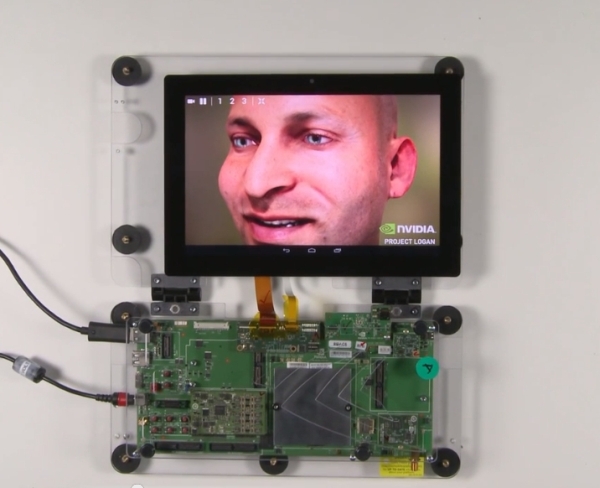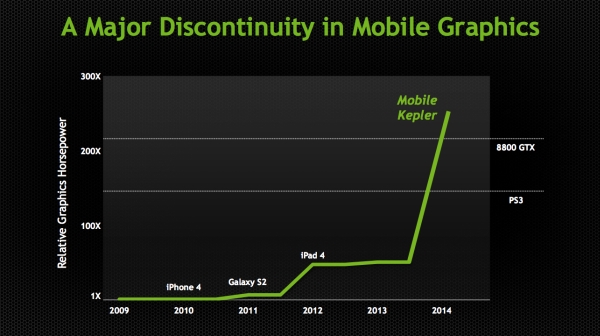In addition to the new Kepler-based Quadro K6000, Nvidia decided that Siggraph 2013 is the right place to showcase its Project Logan in action, running FaceWorks Ira demo while drawing 2-3W of power on a reference tablet design.
Previously seen running on Kepler based GTX Titan 250W+ GPU at GTC 2013, the Faceworks Ira demo that Nvidia describes as a big leap forward in capturing and rendering human facial expression in real time. Although it did not sounds that impressive on a 250W+ 28nm Titan GPU with its 7.1 billion transistors, 2688 CUDA cores, 224 texture units and 48 ROPs, it does sounds really impressive on a Project Logan reference platform that draws 2 to 3W.
Nvidia did not talk about any specs regarding the Logan but we will most likely see the well known 4+1 core arrangement considering that it will be based on Cortex A15 desing. Logan's GPU will be based on a single Kepler SMX which adds up to a total of 192 CUDA cores and although the GPU frequencies are not yet finallized, it still adds up to a whole lot power, GPU wise.
According to early info, Nvidia claims that Project Logan and its Kepler GPU will exceede the performance of Playstation 3 and even the 8800 GTX graphics card, offering 5.2 times more floating point power than the PowerVR SGX 554MP4 GPU in the iPad 4. Nvidia also made quite an interesting table that compares the "mobile Kepler" with Geforce GTX Titan and "closest mobile competitor" showing that, unlike previous Tegra GPUs, Kepler based Logan is a fully unified architecture that feature OpenGL ES 3.0, OpenGL 4.4, DirectX 11, Tesselation and CUDA 5.0 support.
During presentation, Project Logan was running the same Ira demo that we seen at GTC 2013 on the GTX Titan. Although everything was simplified for the sake of mobile platform, it still looks quite impressive considering that it was done in 1080p resolution at 2 to 3W of power. Nvidia also showed the Logan Island Demo that gave it more room to show its OpenGL 4.3 and tesselation capabilities.
You can check out the Ira demo below and found both at Nvidia's Youtube channel.





